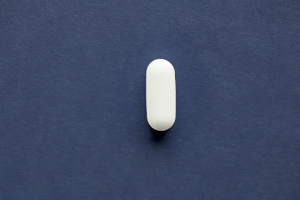 Tramadol is often prescribed for patients suffering from moderate to severe pain because it is less addictive than other types of opioid painkillers. However, it’s important to understand that this drug still carries a very real risk of abuse and addiction.
Tramadol is often prescribed for patients suffering from moderate to severe pain because it is less addictive than other types of opioid painkillers. However, it’s important to understand that this drug still carries a very real risk of abuse and addiction.
About Tramadol
Tramadol was invented in 1962, but it was not sold in the United States until 1995. Patients are most often prescribed tramadol after surgery or if they suffer from a condition causing chronic pain, such as fibromyalgia.
Tramadol comes as pills taken on an as-needed basis or as an extended-release formula that is used for around-the-clock pain relief. Common dosages include 50 mg, 100 mg, 150 mg, 200 mg, and 300 mg tablets. Brand names include:
- Ultram
- Ultram ER
- Ultracet (a combination of acetaminophen and tramadol)
- ConZip
- Ryzolt
As a synthetic opioid, tramadol works by changing how the body feels and responds to pain. It is a central nervous system (CNS) depressant that slows down lung and heart function. Users report feelings of euphoria, as well as deep sleep and improvements in anxiety and depression symptoms.
How Tramadol Compares to Other Opioids
The Controlled Substances Act (CSA) labels most opioid painkillers, including OxyContin (oxycodone) and Vicodin (hydrocodone with acetaminophen), as Schedule II substances. This means they have a legitimate medical value but carry a high potential for abuse and dependence.
Originally, tramadol was not considered a controlled substance. However, tramadol was reclassified as a Schedule IV controlled substance in 2014 after growing evidence showing that people were misusing the drug. As a Schedule IV drug, tramadol has a legitimate medical use and can be addictive, but there is less of a risk than what is associated with a Schedule II or Schedule III drug. Doctors can write prescriptions for up to a 90-day supply, and patients can have five refills in a six-month period.
Recognizing Tramadol Addiction
As with other types of opioid addiction, most people who abuse tramadol began taking the drug with a valid prescription. Common signs that a person may be addicted to tramadol include:
- Exceeding the doctor-recommended dose by taking pills more often or more frequently
- Obtaining prescriptions from multiple doctors or multiple pharmacies
- Stealing pills from others or obtaining them on the black market
- Taking tramadol with alcohol or other drugs to intensify its effects
- Crushing or breaking the tablets to create a powder that can be snorted or injected
- Believing they will only feel “normal” while under the influence of tramadol
- Ignoring responsibilities at work, school, or home to use tramadol
- Being angry or defensive when confronted about their substance abuse
- Having cravings when they are unable to obtain the drug
- Suffering from constipation, sleep problems, muscle aches, nausea, or heartburn with no other identifiable cause
Tolerance and dependence can be warning signs of addiction, but they can also occur even when the drug is being used as recommended. Tolerance means that a person must increase their dosage of a substance to experience the same effects due to prolonged use, while dependence means the body has physically adapted to the drug and a person will experience withdrawal symptoms if its usage is discontinued.
Overdose Risks
Although tramadol is considered a weaker opioid, there is still an overdose risk. The risk is highest when the drug is combined with alcohol or the tablets are crushed into a powder that is injected or snorted. Signs of a potential overdose include:
- Slow heart rate
- Low blood pressure
- Muscle weakness
- Sweaty or clammy skin
- Seizures
- Sleepiness
- Unconsciousness
An overdose is a medical emergency and can be fatal if not treated promptly. If you think someone has taken an overdose of tramadol, call 911 for assistance and provide as much information as you can about what other substances they may have taken. Stay with the person until help arrives. If you have access to naloxone, you may be told to administer this overdose reversal drug while you wait for paramedics.
Getting Help
Addiction is a complex illness with both biological and environmental triggers. It’s not a character defect or the result of a lack of willpower—which means a person can’t get better without access to the appropriate treatment and support. If an addiction to tramadol goes untreated, there is a real risk that a person may graduate to harder prescription opioids or illicit drugs with similar euphoric effects.
At St. Joseph Institute for Addiction, we provide a full continuum of care for men and women who have been diagnosed with opioid addiction. Care is personalized to fit individual needs but typically begins with detox to establish a sober baseline. This is followed by intensive individual, group, and family therapy as well as holistic treatments that help support the development of a wellness-focused lifestyle while addressing the effects of co-occurring mental health disorders, chronic pain, and past trauma. We believe that recovery is always possible and are committed to providing our clients with the tools they need to reach their full potential.
To learn more about SJI Pennsylvania addiction rehab, prescription drug addiction treatment near Altoona, PA and our programs, please contact us at (814) 228-8881.


